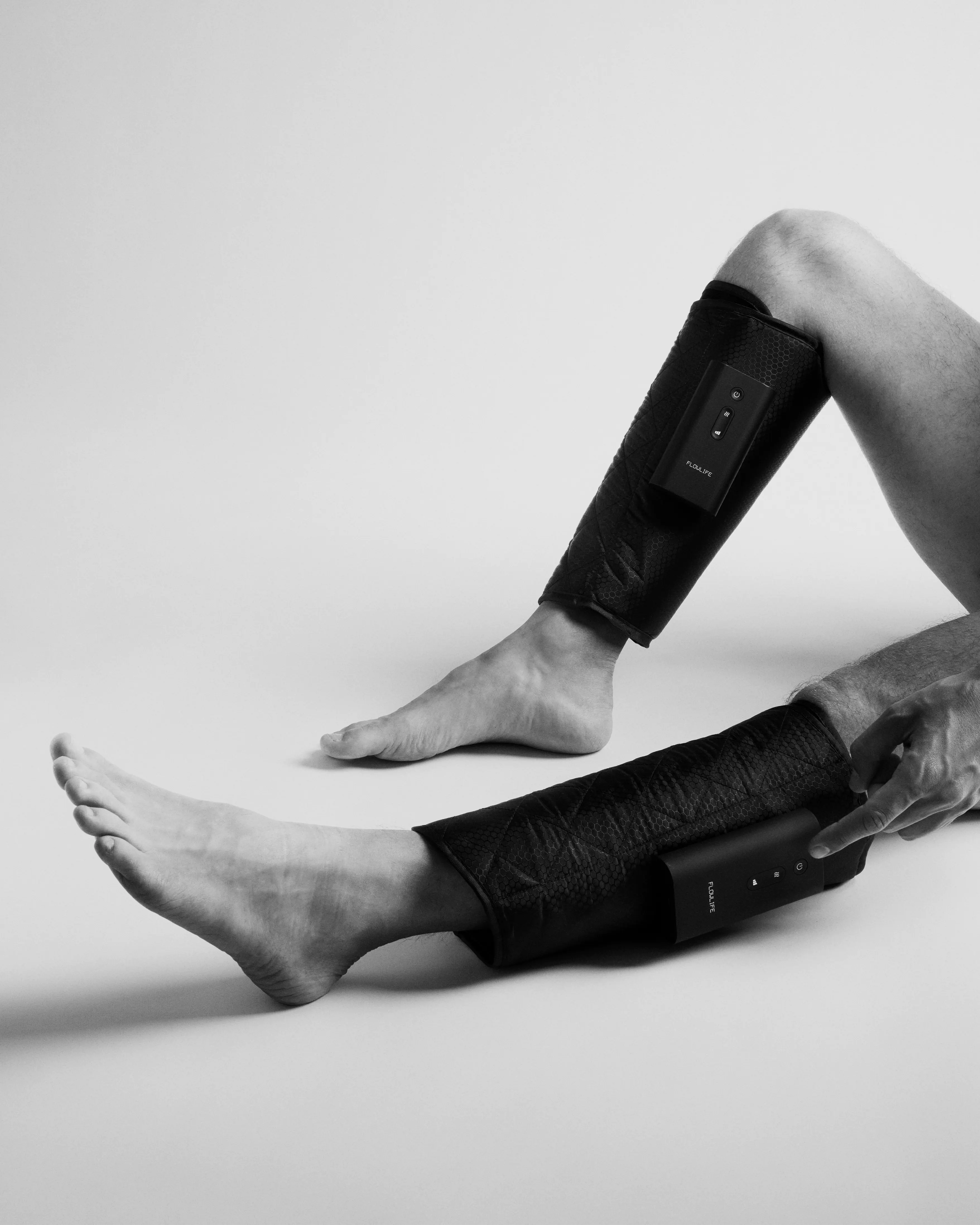
What is Compression Therapy?
Increased Muscle Oxygenation
This study aimed to measure muscle oxygenation in arms and legs when using compression therapy. The measurement involved undergoing compression therapy for 10 minutes, with oxygenation levels (measured in StO2, Skeletal Muscle Oxygen Saturation) recorded every two minutes.
The test group consisted of 20 participants, all over 18 years old (median age: 31 years).
The study showed a significant increase in StO2 levels in the muscle tissue treated with compression therapy, indicating higher oxygenation in the muscle tissue of the arms and legs.
Reduced Muscle Soreness
One of the studies aimed to measure muscle soreness and the experience of muscle soreness. The tests involved exerting the muscles, then using compression therapy, and subsequently measuring the results of the soreness/perceived soreness.
The test group consisted of 20 physically active men in their 20s.
The initial tests were conducted a week before the actual study began. During the testing period, various heavy squats were performed to fatigue the leg muscles. After the workout, participants used compression therapy at an intensity of 70 mmHg for 60 minutes. The tests lasted for seven days, with training conducted on four out of seven days and compression therapy on five out of seven days.
The conclusion showed that the group using compression therapy experienced less muscle soreness.
The same study also measured knee flexibility through the process described above. The group was treated with compression therapy and maintained better knee joint flexibility.
Reduced Fatigue and Pain
This study measured muscle pain and fatigue in connection with marathon running.
The test group consisted of 56 marathon runners.
The test involved running 400 meters before 3, 5, 7, and 14 days after a marathon and filling out a questionnaire on fatigue and muscle pain at each time. During these 14 days, compression therapy was used on four occasions.
The study did not show any improvement in terms of time. Still, it did show less perceived fatigue and muscle pain after using compression therapy in connection with the marathon and running training.
Summary
We can conclude that Flowpression is an excellent tool for optimizing performance. All studies show that compression therapy benefits recovery and even enhances training.

